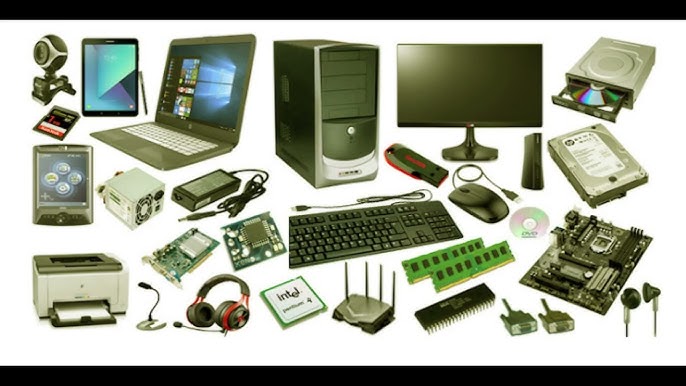Definition of a Computer System
A computer system is described as a programmable electronic device that can accept input data and process it according to program instructions. The computer then presents the treated data as an output to the user. The user can use the handled data for meaningful work.
Components of a Computer System
A computer system contains of two types of components: hardware components and software components.
Hardware Components
The hardware components are the physical parts of the computer system. These include the keyboard, display monitor, mouse, CPU cabinet, and other similar parts.
Software Components
The software components are crucial for the computer system to function. There are two types of software components: application software and operating system.
Application Software
The application software is straight used by the system user to perform different tasks on the computer. Examples of application software embrace Microsoft Word and PowerPoint.
System Software
The operating software is a special type of software that is internally used by the computer to manage and operate the hardware components. The operating system is the most important system software used by the computer, providing an interface for the user to interact with the system.
Architecture of a Computer System
The design of a computer system can be understood in terms of its operational units. The entire functioning of a computer can be grouped into four major units:
Input Unit
The input unit consists of various input devices connected to the computer system, such as the keyboard, mouse, and scanner. Its main function is to accept data from these devices.
Memory Unit
The memory unit of a computer consists of different types of memories used to store data and program instructions during program execution. These memories include disk memory, random access memory (RAM), cache memory, and CPU memory registers.
Central Processing Unit (CPU)
The CPU, also known as the processor or microprocessor, is the brain of the computer system. It provides the processing power to the computer and executes the computer program.
Output Unit
The output unit consists of various output devices connected to the computer system, such as the display monitor, printer, and projector. Its main function is to present the processed data.
Characteristics of a Computer System
A computer system has four important characteristics:
Speed
Computers can operate at very high speeds, allowing for efficient processing of data and instructions.
Accuracy
Computers can operate with remarkable accuracy, without making any mistakes.
Storage
Computers provide different types of storage devices to store large volumes of data.
Fast Decisions and Ability to Perform Repeated Tasks
The processor inside a computer is designed to make fast decisions as per the program instructions. Additionally, computers can work continuously and repetitively perform programmed operations without any breaks.
Features of a Computer System
A computer system has some important features:
Programmability
A computer is programmable, meaning that each task performed by the computer is directed by a set of instructions called a computer program. The program instructs the computer system to perform specific operations.
Data Processing
One of the most common uses of computers is data processing. Computers process raw data and produce information. Raw data needs to be converted into processed data for meaningful work, such as decision making.
Digital Electronic Machine
A computer is a digital electronic machine that contains electronic components and requires an electric current to operate. It understands the language of only zero and one, known as the binary number system.
Machine Code
Computers understand and execute instructions written only in binary, which is also referred to as machine code or machine language. The CPU performs arithmetic calculations, handles logical operations, and executes program instructions encoded in machine language.
Program Compilation
Computer programs are written using high-level programming languages such as C, Java, and Python, which are human-readable. However, the computer processor can only decode and execute instructions in machine code. Therefore, all high-level computer programs must be compiled into low-level machine code that the CPU can directly execute. This conversion process is known as program compilation.
Thank you for reading this blog! We hope you found it informative and helpful in understanding the fundamental concepts of a computer system. If you have any questions, please leave a comment below. Don’t forget to give us a thumbs up and consider subscribing to our channel for more interesting computer science tutorials!

